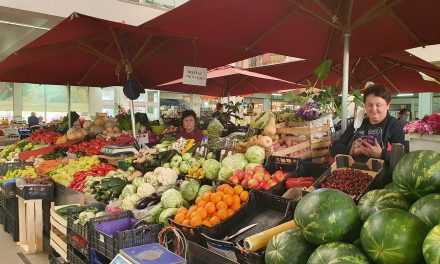The current concept of a farmers’ market is similar to past concepts, but different in relation to other forms – as aspects of consumer retailing, overall, continue to shift over time. Similar forms existed before the Industrial age, but often formed part of broader markets, where suppliers of food and other goods gathered to retail their wares. Trading posts began in 1930s, a shift toward retailers who sold others’ products more than their own. General stores and grocery stores continued that specialization trend in retailing, optimizing the consumer experience,[4] while abstracting it further from production and from production’s growing complexities.
Modern industrial food production’s advantages over prior methods depend largely on modern, cheap, fast transport and limited product variability.[5] But transport costs and delays cannot be completely eliminated. So where distance strained industrial suppliers’ reach, where consumers had strong preference for local variety, farmers’ markets remained competitive with other forms of food retail. Starting in the mid-2000s, consumer demand for foods that are fresher (spend less time in transit) and for foods with more variety—has led to growth of farmers’ markets as a food-retailing mechanism.
Benefits










Recent Comments